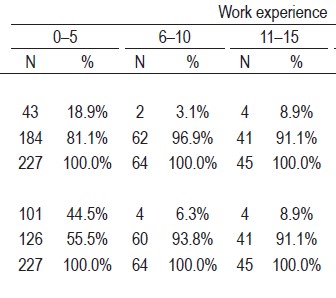Exploring critical factors affecting sign language knowledge and motivation for sign language learning in nurses: A cross-sectional study
DOI:
https://doi.org/10.17532/jhsci.2023.2001Keywords:
sign language, nursing knowledge, communication skills, hearing-impairedAbstract
Introduction: In times when the term inclusion, rights of patients, and the patient as a subject in health care are used more often, the limited availability of written material or sign language interpreters at health services is still a key barrier to health services for people who are hearing-impaired. The aim of this study is to examine nurses’ knowledge of communication skills with hearing-impaired patients, their preferred methods, and the possibility of using translation services.
Methods: The study was cross-sectional, and data were collected in September–October 2019. The study included 407 nursing students. A demographic data form and questions divided into three parts, namely, communication skills (six questions), communication methods (three questions), and interpretation services (five questions), were used to collect data. Data were analyzed with descriptive statistics.
Results: The questionnaire was administered among 424 students, and total of 407 students completed the questionnaire. Most of the respondents were female (320 [78.6%]) with 0–5 years of work experience (227 [55.8%]) in the tertiary level of healthcare (184 [45.3%]). The results showed that 326 (80.1%) of the respondents encountered a person with some form of hearing impairment during their work. Sign language was used by 56 (13.8%) of the respondents, but 74 (18.14%) nurses did not communicate when meeting with hearing-impaired patients. Two-thirds of the respondents never had the opportunity to learn sign language, and 43 (10.54%) respondents would choose an official interpreter as support. Male respondents were aware of the importance of communication with hearing-impaired patients and the use of an application for pain assessment (p < 0.05). No statistically significant difference was observed regarding the department in which the respondents work (p > 0.05).
Conclusion: The results of the study showed insufficient knowledge and skills of nurses to communicate with hearing-impaired people.
Downloads

Downloads
Published
License
Copyright (c) 2023 Ana Marija Hosnjak, Martina Smrekar, Sanja Ledinski-Ficko, Biljana Kurtovic, Irena Kovacevic, Snježana Cukljek, Jadranka Pavic

This work is licensed under a Creative Commons Attribution 4.0 International License.










